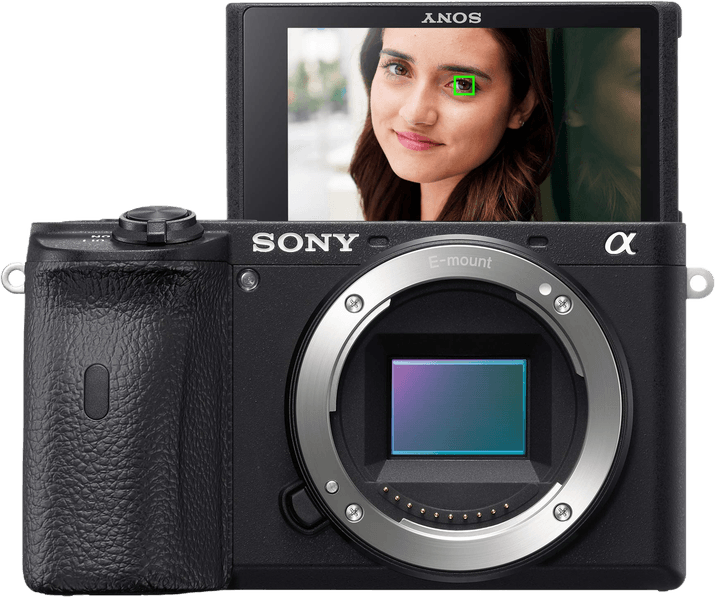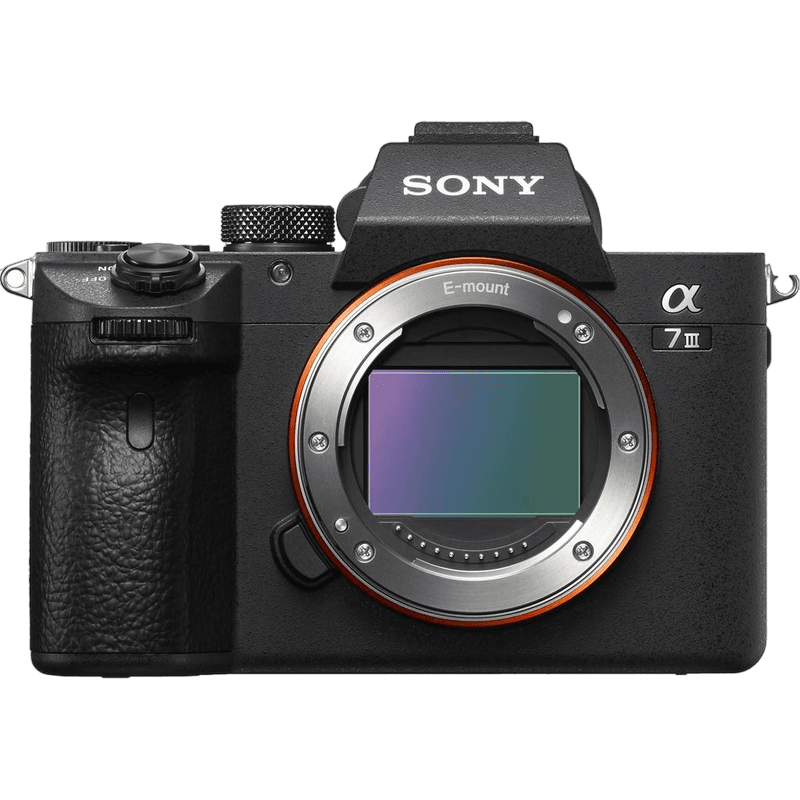Sony a6600 vs a7 III Comparison
Sony a6600

Sony a7 III

The Sony a7 III takes the lead with a score of 81, while the Sony a6600 trails behind at 75/100. Both cameras are mirrorless and were released in 2018 and 2019, respectively.
Common specifications between the two cameras include their mirrorless design and similar announcement dates. The a7 III outshines the a6600 with a better overall score, indicating superior performance. However, the a6600 has its advantages, such as a lower launch price and lighter weight, making it more budget-friendly and portable. The a6600 weighs 503g, while the a7 III comes in at 650g.
Taking into account the specifications and scores, the Sony a7 III stands as the better option for those seeking top performance, while the Sony a6600 is more suitable for those prioritizing affordability and portability.
Sony a6600 vs a7 III Overview and Optics
The Sony a7 III emerges as the winner in the optics comparison with a score of 81/100, while the Sony a6600 trails close behind with a score of 76/100. Both cameras share several specifications, including 24.2-megapixel resolution, CMOS sensor type, Bionz X processor, Sony lens mount, and image stabilization. However, there are distinct differences that contribute to the a7 III’s superior optics score.
The Sony a7 III boasts a full-frame sensor, which is larger than the APS-C sensor found in the a6600. This difference leads to the a7 III’s higher DXOMARK sensor score of 96, compared to the a6600’s score of 82. The larger sensor size provides the a7 III with better low-light performance, increased dynamic range, and superior image quality.
Despite the a6600’s lower optics score, it does have a slight advantage in shooting speed, capturing 11 frames per second compared to the a7 III’s 10. This difference may be beneficial for photographers who prioritize fast action and sports photography.
To conclude, the Sony a7 III outperforms the a6600 in terms of optics, mainly due to its full-frame sensor and higher DXOMARK sensor score. This results in better low-light performance and overall image quality. However, the a6600 offers a minor advantage in shooting speed. Ultimately, the choice between these two cameras depends on the individual photographer’s needs and priorities.
Sony a6600 vs a7 III Video Performance
The Sony a6600 emerges as the superior choice for video capabilities, scoring 91 out of 100 compared to the Sony a7 III’s 70. Both cameras share some common features, such as 4K video resolution and maximum video dimensions of 3840 x 2160. However, the a6600 outperforms the a7 III in other aspects, which contributes to its higher score.
The Sony a6600 boasts a maximum video frame rate of 100fps, significantly higher than the a7 III’s 30fps. This means the a6600 can capture smoother and more detailed slow-motion footage, providing greater creative possibilities for videographers. 0
While the Sony a7 III falls short in terms of frame rate and time-lapse capabilities, it still offers a reliable video performance with its 4K resolution and 3840 x 2160 video dimensions. Despite its lower score, the a7 III remains a viable option for those seeking high-quality video recording.
When comparing the video capabilities of the Sony a6600 and a7 III, the a6600 proves to be the better option. Its higher frame rate and built-in time-lapse functionality give it a clear advantage, resulting in a higher score. The a7 III, though not as advanced in these areas, still delivers quality video recording. Ultimately, the choice between these cameras will depend on individual preferences and priorities, but the a6600’s superior video features make it a more versatile and appealing option.
Sony a6600 vs a7 III Features and Benefits
The Sony a6600 and Sony a7 III both achieve feature scores of 81/100. These cameras share several common specifications, including a 3-inch screen size, 921,600-dot screen resolution, touchscreen capabilities, flip screen, and the absence of GPS. Additionally, both cameras have WIFI and Bluetooth connectivity.
Despite having the same feature score, the Sony a6600 has some advantages over the a7 III. The a6600 is a compact, lightweight camera, making it more portable and convenient for travel and everyday use. Additionally, the a6600 uses an APS-C sensor, which allows for a higher crop factor, resulting in greater reach when using telephoto lenses. This can be beneficial for wildlife and sports photography.
On the other hand, the Sony a7 III also has some advantages. The most notable is its full-frame sensor, which provides better image quality, especially in low light situations. The a7 III also has a more advanced autofocus system, with more focus points and better tracking capabilities. This makes the a7 III more suitable for professional photographers and those who require high-quality images in challenging conditions.
In comparing the features of the Sony a6600 and Sony a7 III, it is evident that both cameras have their strengths. The a6600’s compact size and greater reach with telephoto lenses may appeal to those who prioritize portability and versatility. Meanwhile, the a7 III’s superior image quality and autofocus system cater to professionals and serious enthusiasts who demand exceptional performance. Ultimately, the choice between these two cameras will depend on the individual’s specific needs and preferences.
Sony a6600 vs a7 III Storage and Battery
The Sony a7 III takes the lead in storage and battery with a score of 81/100, compared to the Sony a6600’s score of 48/100. Both cameras share common specifications, including accepting SD/SDHC/SDXC and Memory Stick Pro Duo cards, and using the NP-FZ100 battery type.
The a7 III outperforms the a6600 with its dual memory card slots, offering more storage capacity and flexibility. This feature is particularly useful for professional photographers who require backup storage or want to separate different types of media.
On the other hand, the a6600 has a slightly longer battery life, capable of capturing 810 shots, whereas the a7 III can capture 750 shots. Additionally, both offer USB charging, providing more convenient charging options for users on the go.
Despite the a6600’s advantages in battery life , the a7 III’s superior storage capabilities make it the stronger choice for those prioritizing storage and battery.
Sony a6600 vs a7 III Alternatives
If you’re still unsure which camera is best for you, get inspired with some of our other popular comparisons:
